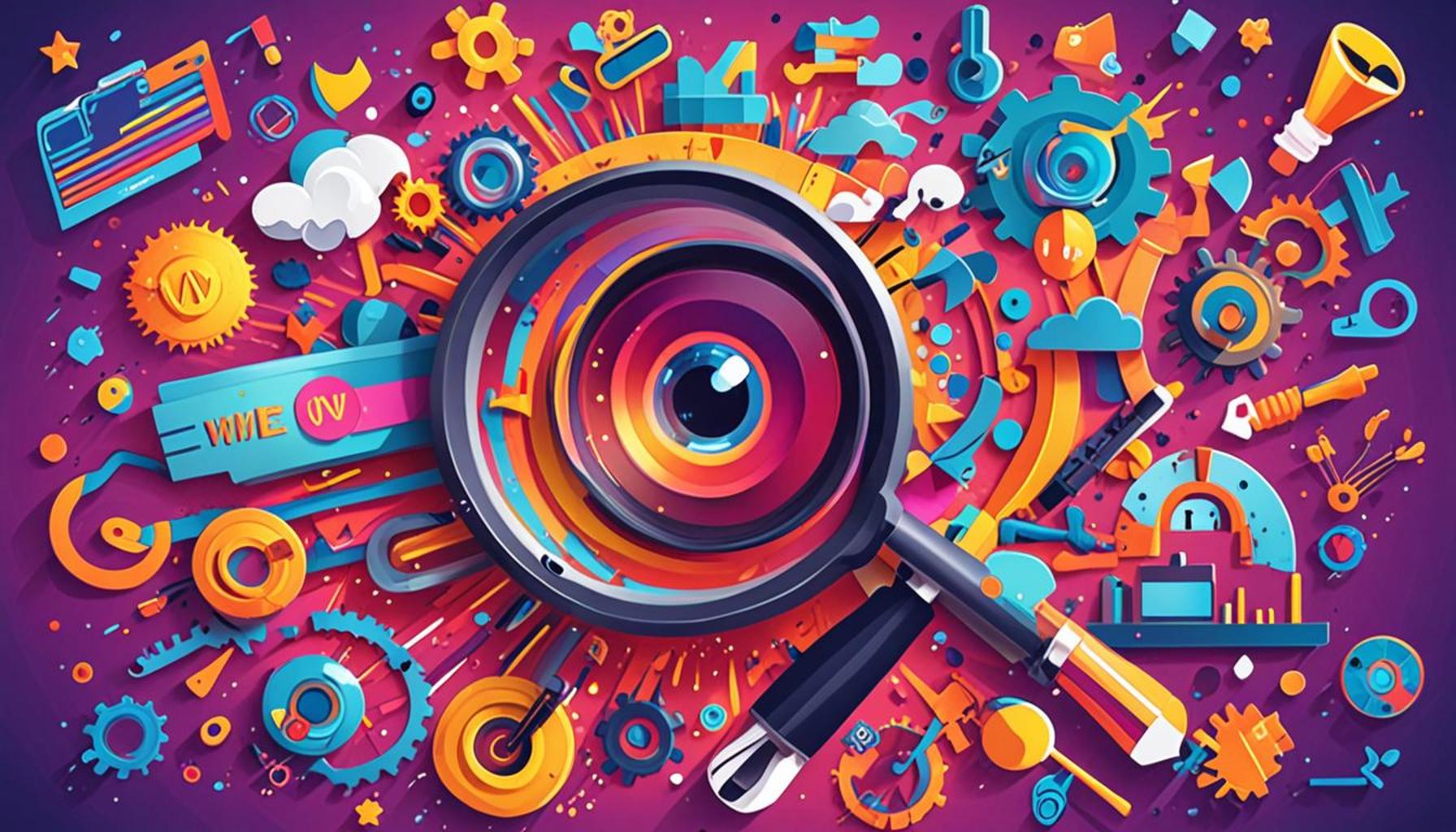How an Effective Content Strategy Can Increase Awareness of Government Benefits

Understanding the Need for Effective Content Strategies in Government Benefits Awareness
In today’s fast-paced digital landscape, where information is abundant yet can be overwhelming, government benefits often remain unnoticed by many individuals who might be eligible for them. Numerous programs aimed at providing financial assistance, health care, and education support exist, but navigating through this labyrinth of information can be daunting. Consequently, an effective content strategy becomes indispensable for increasing awareness and facilitation of government programs. This strategic approach not only informs citizens about available resources but also empowers them to utilize these benefits to improve their quality of life.
Why is an Effective Content Strategy Essential?
- Increased Visibility: The world is flooded with content, and engaging material can significantly amplify the visibility of different government programs. For instance, creative storytelling, testimonials, or success stories posted on social media can resonate with the audience and illustrate the real-life impacts of these benefits.
- Targeted Outreach: Tailoring messages for specific demographics—such as veterans, low-income families, or elderly citizens—ensures that information reaches those most in need. Campaigns that highlight programs such as the Supplemental Nutrition Assistance Program (SNAP) or veterans’ benefits can help bridge gaps where traditional outreach has failed.
- Enhanced Engagement: Incorporating interactive and informative elements, such as infographics or quizzes that help users identify which benefits they might qualify for, can keep citizens engaged and informed about their options.
Multifaceted Communication Approaches
Strategies aimed at informing the public about government benefits must utilize various platforms for widespread dissemination. Consider the following:
- Social Media: Platforms like Facebook, Twitter, and Instagram are ideal for reaching diverse populations already engaged in digital spaces. Campaigns featuring short videos explaining the application processes can simplify complex instructions and encourage individuals to apply.
- Webinars: Hosting live webinars can facilitate deeper understanding of various programs. These sessions can feature experts who answer real-time questions, providing clarity and enhancing the community’s confidence in navigating government resources.
- Newsletters: Regular newsletters, whether digital or print, can serve as an excellent means of providing updates concerning new benefits or changes to existing programs, ensuring continual awareness and access.
Ultimately, the true essence of an effective content strategy lies in its ability to foster a meaningful dialogue with the community. Establishing this trust not only informs but also encourages individuals to explore and leverage the myriad resources they are entitled to. In this way, effective communication transforms not just the lives of individuals, but the community as a whole, paving the way for a more informed and supportive environment.
YOU MAY ALSO LIKE: Read read another article
Leveraging Digital Platforms to Maximize Reach
With the significant shift towards digital communication, utilizing the right platforms becomes crucial for the successful dissemination of information about government benefits. As more individuals turn to the internet for information, government agencies must adapt by maximizing their presence across various online spaces. Here are some innovative ways they can achieve this:
- Search Engine Optimization (SEO): By optimizing content with relevant keywords such as “government benefits,” “financial assistance programs,” and “community resources,” agencies can improve their chances of appearing in search engine results. This targeted approach ensures that when individuals search for assistance, they are met with reliable information directly from government sources.
- Content Diversity: Utilizing various forms of content—including articles, videos, and podcasts—can cater to different learning preferences, increasing the likelihood that individuals will engage with the information. For example, an informative video can explain the intricacies of health care benefits in a digestible format.
- User-Generated Content: Encouraging recipients of government benefits to share their success stories can create a sense of community and trust. These testimonials can serve as powerful endorsements of government programs, helping to dispel skepticism and encouraging others to inquire about the available services.
Adopting these digital strategies will assist government agencies in gaining further traction while reaching a wider audience. Importantly, this not only facilitates awareness but also encourages a culture of inquiry, empowering citizens to seek out and utilize resources that can significantly improve their living conditions.
Creating Compelling Messaging
The effectiveness of a content strategy is also heavily reliant on the messaging used to connect with the audience. Government agencies must emphasize clarity and impact in their communications. Here are some practical tips for crafting compelling messaging:
- Clear Language: Avoiding jargon is key. Simplifying language will help demystify government benefits, making it easier for citizens to understand eligibility requirements and application processes.
- Emphasize Benefits: Phrasing content to highlight the positive impacts of programs can engage readers. For instance, instead of merely stating the availability of food assistance, messaging can focus on how it alleviates food insecurity and supports family health.
- Call to Action: Encouraging immediate action is vital. By providing clear steps on how to apply for benefits, agencies can motivate individuals to take that next step rather than leaving the information at a standstill. Specific calls, such as “Apply now for SNAP and provide nourishment for your family,” can prompt immediate interest.
In essence, a well-thought-out content strategy employs a combination of digital outreach and compelling messaging that meet citizens where they are, empowering them to recognize and pursue available benefits. This synergistic approach not only amplifies awareness but also nurtures a community that is informed and engaged, ultimately enhancing the well-being of the population.
| Category | Description |
|---|---|
| Targeted Outreach | With a precise content strategy, government organizations can reach specific demographics that may be unaware of available benefits. |
| Engagement Metrics | Analyzing data to understand how audiences interact with content can highlight successful elements and areas needing improvement for future campaigns. |
| Consistent Messaging | An effective content strategy creates a unified voice across various platforms, reinforcing the importance and accessibility of government benefits. |
| Increased Trust | Providing accurate, useful content builds trust within the community, encouraging more individuals to utilize benefits designed for them. |
Utilizing these strategies allows government entities to educate the public and facilitate access to essential services. By focusing on targeted outreach, agencies can actively promote programs tailored to the needs of specific groups, ensuring no one benefits from valuable resources. Each successful engagement metric collected serves as data for improving future content approaches, ultimately strengthening the connection between government services and the community. In this digital age, consistency is critical. A well-planned approach ensures that all messaging across social media, official websites, and other communications remain cohesive and clear. This unified strategy not only underscores the significance of various benefits available but also aids in establishing credibility and fostering a supportive environment for individuals seeking assistance. Therefore, embracing a robust content strategy emerges not just as a necessity, but as a strategic advantage in making government benefits more recognizable and accessible to those who need them most.
LEARN MORE: This related article may interest you
Engaging the Community Through Social Media
Social media platforms have transformed into essential tools for communication and engagement, providing a unique opportunity for government agencies to connect with citizens on a more personal level. To effectively raise awareness about government benefits, agencies should consider developing targeted social media strategies. Here are a few insights into how they can maximize their engagement efforts:
- Targeted Advertising: Utilizing paid social media ads can help agencies reach specific demographics and communities that might need government assistance the most. By carefully selecting parameters such as age, location, and interests, campaigns can effectively direct information to those who would benefit from programs such as Medicaid or unemployment benefits.
- Interactive Content: Engaging posts, polls, and quizzes can stimulate interest and increase participation. For instance, a post outlining where to find help with housing assistance, followed by a quiz on eligibility requirements, can enhance understanding while prompting users to share the content, further increasing its reach.
- Live Q&A Sessions: Hosting live question-and-answer sessions on platforms like Facebook or Instagram can demystify benefits and address citizen inquiries in real-time. These sessions can foster a sense of trust, allowing community members to express concerns and receive immediate information on benefits they may qualify for.
By embracing social media as a pivotal communication tool, government agencies can create a vibrant online presence that encourages information sharing and active outreach, ultimately empowering citizens to access the benefits available to them.
Implementing Feedback Mechanisms for Continuous Improvement
For a content strategy to truly resonate with its audience, it must involve a feedback loop that enables continuous improvement. Gathering insights from citizens can help agencies refine their messaging, outreach strategies, and service offerings. Here are some effective methods to achieve this:
- Surveys and Polls: Regularly conducting surveys targeting specific communities can provide valuable data on how well the agency’s messaging is being received. Questions can cover topics like program awareness, clarity of information, and areas for enhancement, allowing agencies to adapt their strategies accordingly.
- Engagement Analytics: Analyzing engagement data across digital platforms can yield insights into which content resonates most with the public. Identifying high-performing posts—whether they’re videos, infographics, or success stories—can help agencies strategize future outreach efforts.
- Community Focus Groups: Establishing focus groups that include beneficiaries can offer direct access to qualitative feedback. These discussions can reveal common misconceptions and highlight what information is particularly useful or lacking, enabling staff to address community needs more effectively.
Incorporating feedback mechanisms fosters a responsive approach to content strategy, ensuring that citizen voices are heard and leading to more effective outreach about government benefits. By showing that they value community input, agencies can strengthen relationships and encourage ongoing dialogue, thereby cultivating a proactive citizenry eager to engage with available resources.
Utilizing Partnerships for Broader Outreach
Forging partnerships with community organizations, nonprofits, and local businesses can enhance the reach of government benefit information. These partnerships create multifaceted channels for information distribution and facilitate grassroots engagement. Here are some tactical ways to leverage these collaborations:
- Co-hosting Events: Collaborating with local organizations to host informational events can amplify awareness and present services in a community-friendly setting. Workshops detailing benefits can be organized to guide interested residents through application processes.
- Resource Sharing: Partnering agencies can exchange resources, such as flyers or brochures, that explain available programs. By placing these materials in community centers, libraries, and schools, citizens are more likely to encounter information during their daily routines.
- Cross-promotion: By promoting each other’s services through social media and newsletters, government agencies can benefit from the trust and networks established by community partners. This creates an authentic method of reaching potential beneficiaries who may be unaware of the available help.
Through these collaborative efforts, agencies can leverage existing community relationships to foster a wider spread of critical information, raising awareness of government benefits and enhancing the overall well-being of the populace.
ADDITIONAL INSIGHTS: Expand your understanding here
Conclusion
In an era where information is abundant yet often inaccessible, an effective content strategy emerges as a crucial tool for increasing awareness of government benefits. Through strategic engagement, targeted outreach, and community partnership, government agencies have the potential to not only inform citizens but also empower them to take actionable steps toward accessing vital resources.
Harnessing the power of digital platforms allows agencies to craft messaging that resonates with diverse communities. Whether it is through interactive social media campaigns, comprehensive feedback mechanisms, or collaborative efforts with local organizations, each element contributes to breaking down barriers that often prevent individuals from engaging with available assistance programs. Implementing surveys, analytics, and focus groups ensures that content is not only relevant but also continuously improved based on community needs and feedback.
As we move forward, it is essential to recognize the transformative impact a well-designed content strategy can have on public awareness and participation. By fostering open communication channels and prioritizing community empowerment, government entities can create an environment where help is sought and received rather than overlooked. Organizations that commit to this approach will not only fulfill their mission to serve but also cultivate a more engaged and informed citizenry, ultimately enhancing the overall well-being of society.
Therefore, the dialogue surrounding government benefits should evolve from a static exchange of information to a vibrant conversation that involves all stakeholders, leading to shared prosperity and improved quality of life for all.


